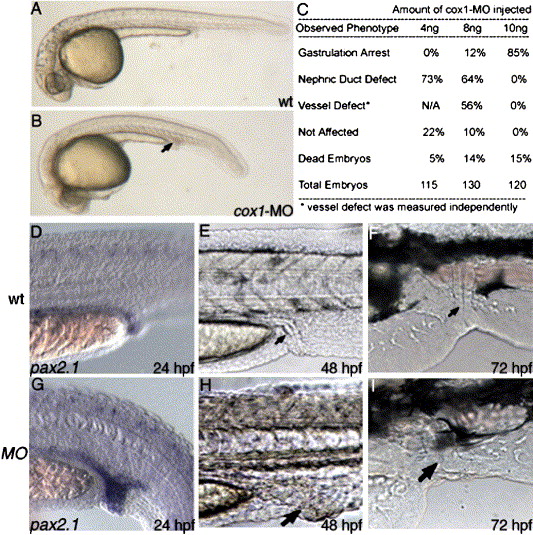Image
Figure Caption
Fig. 7 cox1-MO causes posterior mesoderm defect similar to indomethacin-induced phenotype. Compared to uninjected wild-type (A), injection of 8 ng cox1-MO (B) specifically disrupted posterior mesoderm organs at 1 day, including enlarged nephric duct and distended posterior vasculature (B, arrow). Staining with pax2.1 shows increased pronephric duct size in the posterior region (D). As the embryos develop, the increased staining correlates to increase in posterior nephric duct size at day 2 (H, arrow) and day 3 (I, arrow), compared to wild-type (E, F).
Figure Data
Acknowledgments
This image is the copyrighted work of the attributed author or publisher, and
ZFIN has permission only to display this image to its users.
Additional permissions should be obtained from the applicable author or publisher of the image.
Reprinted from Developmental Biology, 282(1), Cha, Y.I., Kim, S.H., Solnica-Krezel, L., and Dubois, R.N., Cyclooxygenase-1 signaling is required for vascular tube formation during development, 274-283, Copyright (2005) with permission from Elsevier. Full text @ Dev. Biol.

